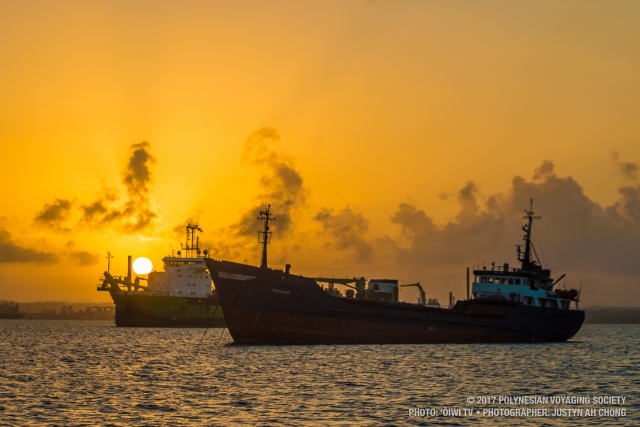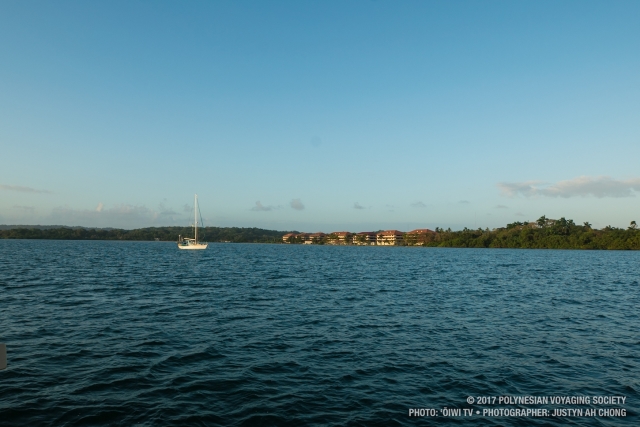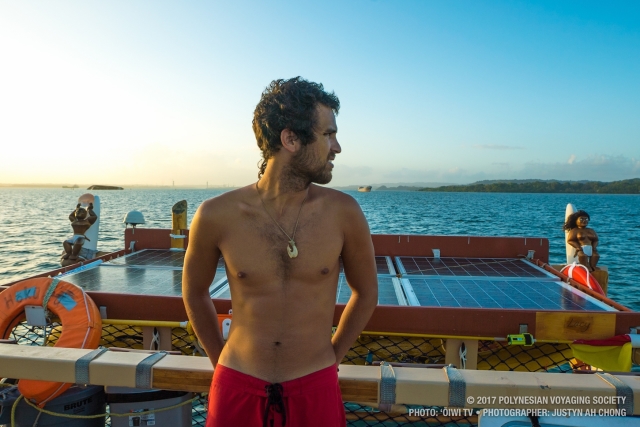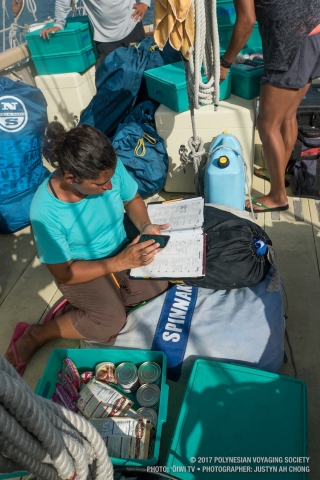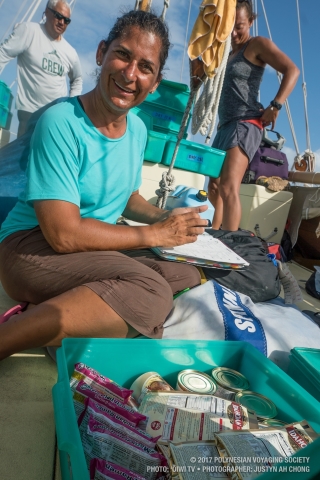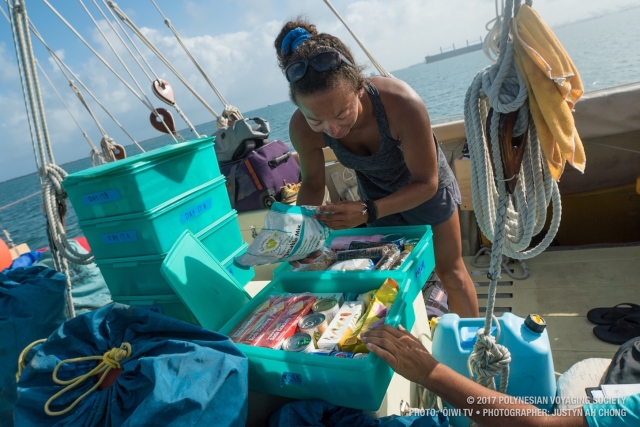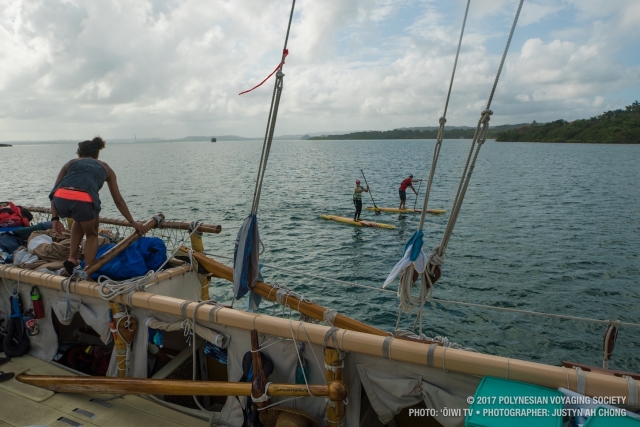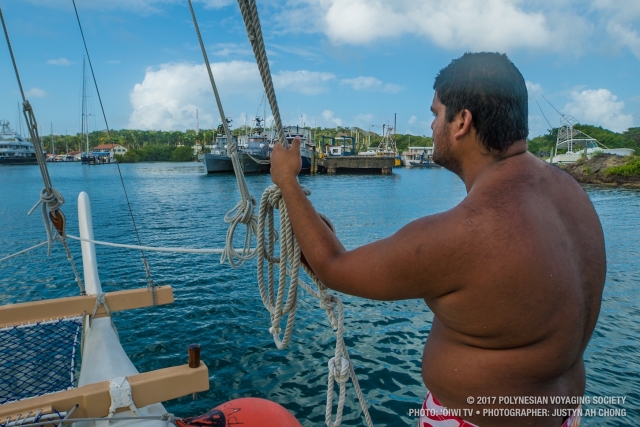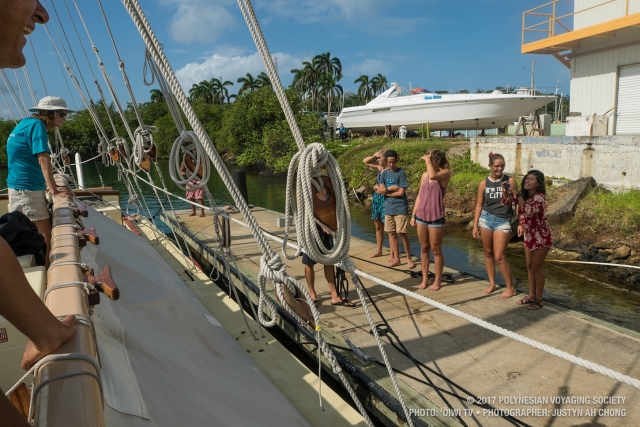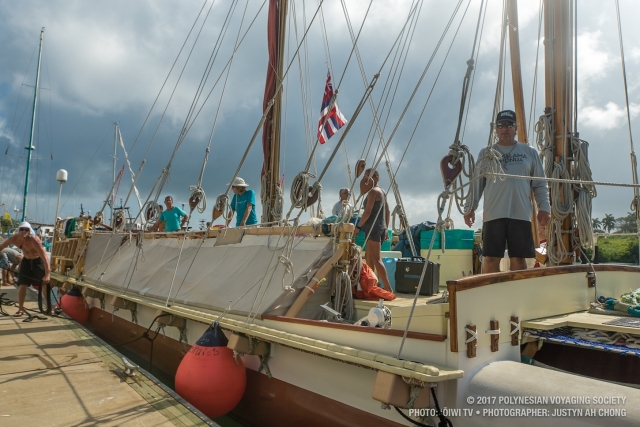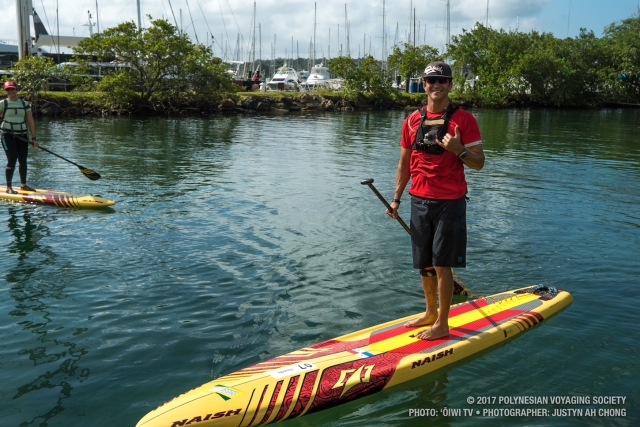
Hōkūleʻa Update | Arrival in Panama
- Posted on 10 Jan 2017
- In Newsletter, Photo Galleries, Teachers, Updates
On Leg 26, Hōkūleʻa voyages south from Florida to Panama. In this update, Darienne Dey recounts arriving in Panama and the crew’s first huakaʻi to Panama City.
January 3
Blog by Darienne Dey
Today” actually began yesterday. We had been surfing the swells all day when the afternoon engulfed us in an overcast haze reminiscent of the doldrums. Clouds crowded the sky (much to our relief, from the nearly equatorial sun) as thoughts of anticipated landfall crowded our naʻau. The faint outline of a lone barge or cruise-liner would occasionally creep up on our horizon, but today was different. Beyond our ʻākea hull, a familiar silhouette began taking shape. Was that land? No. Ships? Yes. Big ships. A whole line of them. We could feel multiple convergences upon us: of weather and waves, of oceans and lands, of commerce and culture. We were entering Panamaʻs canal zone.
As the sun converged with the horizon, the waves converged below us, making our initial approach (under tow by the Gershon II and her intrepid crew) serve as a hearty exercise in five-person steering. Veering past less-than-ideally-lit buoys like the Millennium Falcon through an asteroid field, we nevertheless could not help but marvel at the multitude and magnitude of the ships that were, by that time, surrounding us. Framed by their lights, these monsters of the deep looked even more unearthly as they stealthily moved past us (or rather, as we stealthily moved past them). Eventually, we anchored with Gershon II off on the western side of Limon Bay.
The next morning (“actual” today), we awoke for the first time in many days to a stationary waʻa. We promptly swapped out our Marconi sails for our bare crab claw booms (to free up our catwalks) and started cleaning and taking inventory. During our short side-tow (from Gershon IIʻs dinghy) to nearby Shelter Bay Harbor, we were greeted by SUPers Richard Chirri and Jolienne Marten, whose Naish boards glided smoothly on either side of us (just as they had when crossing Pailolo and Kaiwi channels in months past). At our designated dock, cheehoos erupted from our welcoming party, which consisted of several sailors who were also partaking in their own circumnavigation of the Caribbean (having crossed paths with Hōkūleʻa previously in Cuba) as well as Oriana Kalama, who had served as cook and quartermaster on Haunui with the Pacific Voyagers from San Diego to Tahiti. True to her previous kuleana, Oriana stuffed us with a delicious lunch of rice, beans, onions, and fish.
Soon afterwards we were visited by various canal authorities who will help ensure Hōkūleʻa’s safe and timely transit of the canal and return to her home ocean. It was refreshing to witness their enlightenment about the waʻa’s mission and what she has already accomplished worldwide. We look forward to Hōkūleʻa’s path converging with more people’s lives as we prepare for the coming days’ short yet historic crossing.
January 4
Blog by Darienne Dey
Last night, after two weeks of staying one to two nautical miles apart, Hōkūleʻa and Gershon II crews finally got to reconnect in person and share our first land-based dinner together at Shelter Bay Marinaʻs “The Dock” restaurant. Needless to say, dessert was ordered by all. Then today, while part of the crew cleaned and prepped the waʻa (as well as engaged in water recreation off of and around it), some of both crews (including the captains) teamed up to huakaʻi together to Panama City for provisions and supplies for the canal transit.
Soon after our navigator Luis (of Viajes Especiales) picked us up, team Hōkūgershon was back on the water, riding a ferry across the canal and heading east towards Colon proper. Looking north as we crossed, we could see (by the light of day) where we had made our exciting entrance to the canal two days earlier (and the ever-present crowd of ships still dotting the horizon). We continued our journey on a highway (not unlike the Likelike or Pali back home) surrounded by jungle as far as the eye could see. Every few miles, tin-roofed residential communities and edges of meandering waterways revealed themselves through the dense foliage, but the greenery otherwise appeared ready to engulf the entire landscape.
Thanks to my Panamanian mother naming me for the particularly infamous Darien portion of the isthmus’ jungle, I have held a lifelong appreciation and respect for this place that can be as dangerous as it is beautiful. Voyagers can just as readily apply this sentiment to the ocean. In the words of explorer Ernest Shackleton, “…if you wish to see Nature robed in her mantle of might, look at a storm at sea; if you want to see her robed in her mantle of glory, look at a sunset at sea.” Storms and sunsets serve as constant haʻawina for us on the water and on land. They help us hone our cognizance of our immediate and distant surroundings. They help us see connections and make decisions to restore lōkahi.
During our errand running in Panama City, we recognized a certain ʻano. Cars were small. Housefront rubbish receptacles were finite (and relatively small). Packaged food came in smaller proportions. Toilets were for natural waste only (with nearby rubbish bins for all used paper). There was an understated level of environmental consciousness that fascinated us almost as much as hearing howler monkeys or seeing bioluminescent insects at night. We have learned much about striving for lōkahi among our crews as well as with our surrounding environments, but we look forward to the voyage that each new day brings.
Hōkūle‘a Homecoming – Save the Date
Sign up for updates and be the first to know as we continue to detail
homecoming festivities that will include multiple events!
